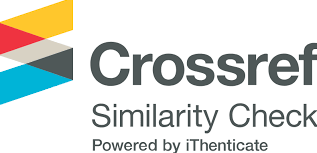In vitro propagation for superior families of Acacia magium Willd. providing for clonal family forestry
Keywords:
Acacia, plantation of clonal forest according to family,, fast multiplication of buds, stimulating root formationAbstract
Clonal Family Forestry (CFF) is a method for vegetative propagation of a
series of preeminent individuals in superior families, without keeping the
homogeneous clones. The aim of the research was to introduce the CFF
propagation technique for Acacia mangium by tissue culture for production
which will help create a large number of quality seedlings and expand the
family clonal afforestation method. The CFF method was applied to 10
families of Acacia that had shown superior genetic quality. The best
disinfection method was a combination of 2 disinfectants; 20% hydrogen
peroxide solution for 30 minutes and 1% Natri Dichloroisocyanutrale
solution for 10 minutes which achieved a clean sample rate of 84.4%, reached germination after 3 days and fully germinated after 5 days. The most
suitable medium for rapid shoot multiplication was: MS * (Improved MS)
+ 1.5 mg/l BAP + 30 g/l sugar + 4.25 g/l Agar for shoot multiplier 2.9 times,
producing a bud height of 2.7 cm with an effective rate of shoot of 71.8%.
The best rooting stimulating medium was: 1/2MS * + 2.0 mg/l IBA + 15 g/l
of sugar + 4.3 g/liter of Agar, resulting in a root shoot rate of 96.7%, 2.7
roots/plants and root length of 1.5 cm. The appropriate training time was
20 - 30 days for the survival rate of seedlings outside the nursery to reach
over 75%. After 7 - 8 bud multiplication cycles, with each cycle of 25
days, Acacia bud clusters began to age and the multiplier factor decreased,
hence it was necessary to destroy and replace the sample to continue
production. The results of the shoot multiplication show that after 7 - 8 bud
multiplication cycles, 1 Acacia mangium seed produces approximately
1,800 - 1,900 seedlings eligible for outplanting after 3 months of nurturing.
References
1. Griffin, A.R; Tran Duc Vuong; Harbard J.L.; Wong C.Y.; Brooker C.; Vaillancourt R. E., 2010. Improving controlled pollination methodology for breeding Acacia mangium Willd. New Forest, 1 - 12.
2. Muhammad Shahinozzaman, Mustafa Abul Kalam Azad, Muhammad Nurul Amin, 2012. In vitro Clonal Propagation of a Fast Growing Legume Tree - Acacia mangium Willd. Employing Cotyledonary Node Explants. Not Sci Biol, 4 (2): pp 79 - 85.
3. Phí Hồng Hải, Triệu Thị Thu Hà, 2016. Nghiên cứu nhân giống in vitro các gia đình ưu việt Keo tai tượng(Acacia mangium Willd.) phục vụ trồng rừng dòng vô tính theo gia đình.
4. Phí Hồng Hải, Văn Thu Huyền, 2016. Nhân giống in vitro các gia đình ưu việt Keo lá liềm (Acacia crassicarpa A. Cunn. ex Benth.) phục vụ trồng rừng.
5. Lê Đình Khả, 2003. Chọn tạo và nhân giống cho một số loài cây trồng rừng chủ yếu ở Việt Nam. NXB Nông nghiệp, Hà Nội.
6. Đoàn Thị Mai, 2003. Nhân giống cho một số loài cây trồng rừng có năng suất, chất lượng cao bằng phương pháp nuôi cấy mô. Báo cáo Hội nghị “Công nghệ sinh học” toàn quốc, Hà Nội.
7. Đoàn Thị Mai, 2009. Nuôi cấy mô một số giống keo lai mới chọn tạo. Tạp chí Khoa học Lâm nghiệp, số 2.
8. Đoàn Thị Mai, Lê Sơn, 2011. Nhân nhanh giống keo lai tự nhiên, keo lai nhân tạo, Bạch đàn Uro, bạch đàn lai nhân tạo và Lát hoa mới chọn tạo bằng công nghệ tế bào. Báo cáo tổng kết đề tài thuộc chương trình công nghệ sinh học trong nông nghiệp và phát triển nông thôn.








